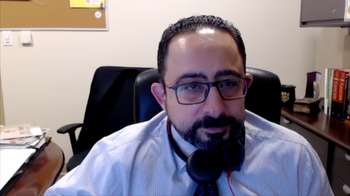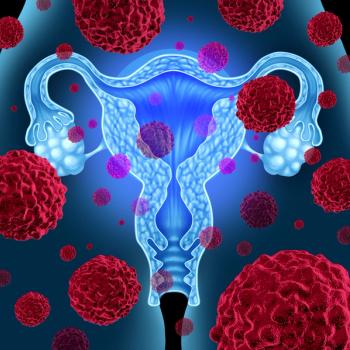
- Oncology NEWS International Vol 11 No 2
- Volume 11
- Issue 2
Cancer Prevention Research Hampered by Lack of Biomarkers
WASHINGTON-"The search for cancer prevention agents is hampered by the fact that only one biomarker-the prostate-specific antigen (PSA)-now offers a simple, noninvasive measure of the cancer process in the body," Robert W. Day, MD, PhD, said at a meeting of the Cancer Prevention Working Group, sponsored by the Cancer Research Foundation of America (CRFA). "The need for cancer biomarkers is critical, not only for their diagnostic benefits but also to provide endpoints for judging the effectiveness of any proposed chemopreventive agents."
WASHINGTON"The search for cancer prevention agents is hampered by the fact that only one biomarkerthe prostate-specific antigen (PSA)now offers a simple, noninvasive measure of the cancer process in the body," Robert W. Day, MD, PhD, said at a meeting of the Cancer Prevention Working Group, sponsored by the Cancer Research Foundation of America (CRFA). "The need for cancer biomarkers is critical, not only for their diagnostic benefits but also to provide endpoints for judging the effectiveness of any proposed chemopreventive agents."
Without such biomarkers, the endpoints for cancer prevention would take years to reach by current epidemiologic standards, said Dr. Day, president and director emeritus of the Fred Hutchinson Cancer Research Center.
Biomarkers not only diagnose individual patients, but can identify a population at risk who can then form a homogenous group for intervention. Once such biomarkers are found, a more focused investigation of chemoprevention can proceed.
Attendees at the conference also discussed several alternative approaches to research into cancer prevention.
"At present, chemoprevention is as much a matter of chance as design," said Andrew Dannenberg, MD, professor of medicine, Weill Medical College of Cornell University. "Chemopreventive agents come into the prevention field by the side door; COX-2 inhibitors, for example, came in as an extension of their approved use as anti-inflammatory agents."
Waun Ki Hong, MD, noted that "perhaps chemoprevention should be seen as therapy for the precancer, just as chemotherapy is the drug for cancer." Dr. Hong is head of the Division of Cancer Medicine, M.D. Anderson Cancer Center. "Can you eliminate the precancerous cells entirely?" he asked. "If so, cancer can be delayed or prevented. The big question is how do you measure the endpoint?"
Yet another way of looking at prevention is to think of it as treatment of intraepithelial neoplasia, said David S. Alberts, MD, associate dean for research, Arizona Cancer Center, Tucson. "Eighty percent of patients with untreated intraepithelial neoplasia develop cancer within 5 years," he noted.
Because intraepithelial neoplasia is clinically heterogeneous, the risks and benefits of treatment may vary. In any case, preventive intervention must be demonstrated clinically to have an impact on intraepithelial neoplasia, said another participant.
"It’s hard to explain to patients how a clinical trial that may take years will benefit them," said Bernard Levin, MD. "At present, we don’t have a complete set of information to make recommendations. We have to understand risks, benefits, and costs."
That process must be furthered by encouraging interaction among a number of interested parties, said Margie L. Clapper, PhD, director of chemoprevention research, Fox Chase Cancer Center.
"We must enhance the dialogue between the scientific community and the FDA, and establish collaborations between basic researchers and clinical specialists, as well as among primary care physicians, the American Academy of Family Practice, the CDC, and informed consumers," Dr. Clapper said. "We may also need to change the criteria for drug approval, given the long time needed to confirm an effect."
Articles in this issue
over 23 years ago
R115777 Has Significant Activity in CML and Myelofibrosisover 23 years ago
National Cancer Prevention Campaign Discussedover 23 years ago
CHOP Plus Rituxan Proves Cost-Effective in B-Cell Lymphomaover 23 years ago
Lung Cancer Screening Protocol Moves Forwardover 23 years ago
Rituximab Improves Efficacy of Chemotherapy for Follicular Lymphomasover 23 years ago
Long Survival Confirmed in CML Patients Who Respond to InterferonNewsletter
Stay up to date on recent advances in the multidisciplinary approach to cancer.


















































































